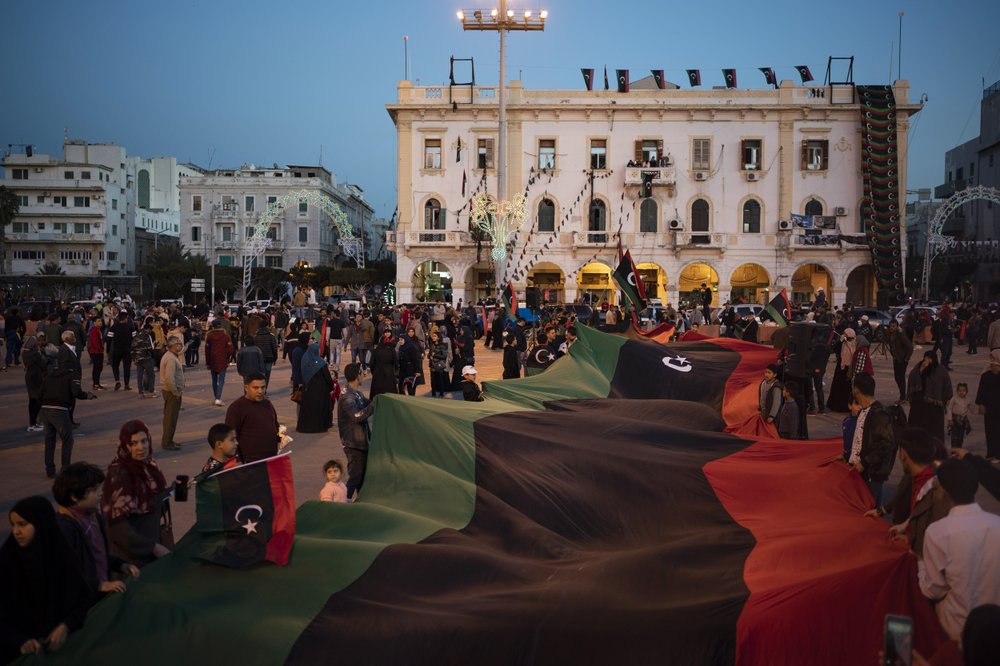Salloum–The scene of thousands of Egyptians flocking back into the border city of al-Salloum from Libya appears like what has occurred for many years happening in reverse.
Libya has traditionally been a popular and easy destination for Egyptian labor, whose local market lacks sufficient jobs to include them.
But Libya’s revolution against its incumbent leader, Muammar al-Qadhafi, which kicked off on 17 February, and Qadhafi's response to the opposition, left no safe space for Egyptians to stay.
“We saw people being killed in Benghazi,” says Mohamed Ibrahim, 35, a casual laborer. “I haven’t seen a president open live fire at his people before.” As he spoke, Ibrahim was busy packing his goods into a pick-up truck that will drive him to his home city in Egypt’s delta.
At the border crossing of al-Salloum, tens of microbuses and pick-up trucks lined up to taxi arriving passengers to various destinations in Egypt. Their drivers tried to attract potential passengers by repeatedly shouting names of destinations. They were often interrupted by rushing ambulances that made their way through stacks of luggage, crowds, and vans to aid the wounded.
On Wednesday, Reuters reported that no less than 1000 have died during unrest in Libya. Of them, an unconfirmed ten Egyptians are reported dead.
Many Egyptians felt targeted after Qadhafi’s 22 February speech where he accused “Egyptian and Tunisian elements” of inciting Libyans to revolt and giving them “drugs” that made them unconscious of their acts. The words confirmed that the Libyan leader, who has ruled the country for 41 years, felt threatened by bordering Tunisian and Egyptian revolts that recently toppled their leaders.
But the revolutions, both in Egypt and Libya, left returnees with hope, despite their discontent for having fled jobs and sources of income.
Yasser Aziz, an engineer originally from Alexandria, stood waiting for his pregnant wife to get her entry stamp from the Egyptian border authorities. His anger at the Libyan president’s allegations, coupled with his pride of Egypt’s own revolution, reinforced his support for Libya's people.
“We drove 500 kilometers from Benghazi to the borders and all I can say is that I saw the bravery of the men of Libya,” he said. “Popular committees guarded the road as all government presence disappeared. They raised Libya’s old flag, and when they knew we were Egyptians, they cheered for us and our revolution.”
Upon independence from Italian colonization in 1951, Libya was ruled by a local monarch, King Idris, who was overthrown by Qadhafi in 1969.
For Aziz, who spent two years in Libya, the sorrow of losing his job seemed overshadowed by respect for Libya’s persisting struggle despite Qadhafi’s bloody threats.
Radi Mohamed also seemed content, despite his 11-year stay in Libya, where he worked as a barber in the city of Tobrok.
“I am fine with coming back. Maybe the revolution in Egypt will bring positive change for us. Maybe this is a good reason to begin anew in Egypt.”
For years, Libya has served as both a destination and transit hub for migrants throughout Africa. The local economy requires high quantities of unskilled labor.
This was particularly the case when Libya opened up its borders in the 1990s to neighboring African countries in an attempt to showcase the country's leadership role on the African continent. In this context, the Four Freedoms agreement was signed between Egypt and Libya to allow for greater freedom of movement between the two countries.
For Egyptians, 1 million to 1.5 million of whom reside in Libya according to the Egypt's Foreign Ministry, economic migration of both skilled and unskilled workers to the neighboring oil-rich country started in the 1960s.
However, in 2006, former Minister of Labor and Manpower Aisha Abdel Hady signed a protocol with Libya that imposed stricter regulations on “legalizing” the status of Egyptians there. The protocol was seen as an attempt to curb the flow of migrants from Egypt, especially those who use Libya to cross to Italy via the Mediterranean. This protocol and others came as part of Libyan-Italian cooperation to curtail illegal immigration to Europe.
From the Egypt side, aid trucks stormed the al-Salloum border crossing as well. Inside, a clique of young Egyptians wore tags that read, “the youth of Egypt’s revolution.”
“We’re here with blankets, food, mainly fava beans and other stuff,” said Ali Abdelwahab, a young man who came with an aid truck put together by a youth group who had been actively involved in Tahrir protests that toppled former President Hosni Mubarak.
He clarified that his mission is not only humanitarian.
“We are inspired by the resilience of our Libyan brothers and support their revolution,” he said as he went back to organizing supplies he brought from Cairo.




